The Trouble with 'Road Tubeless'
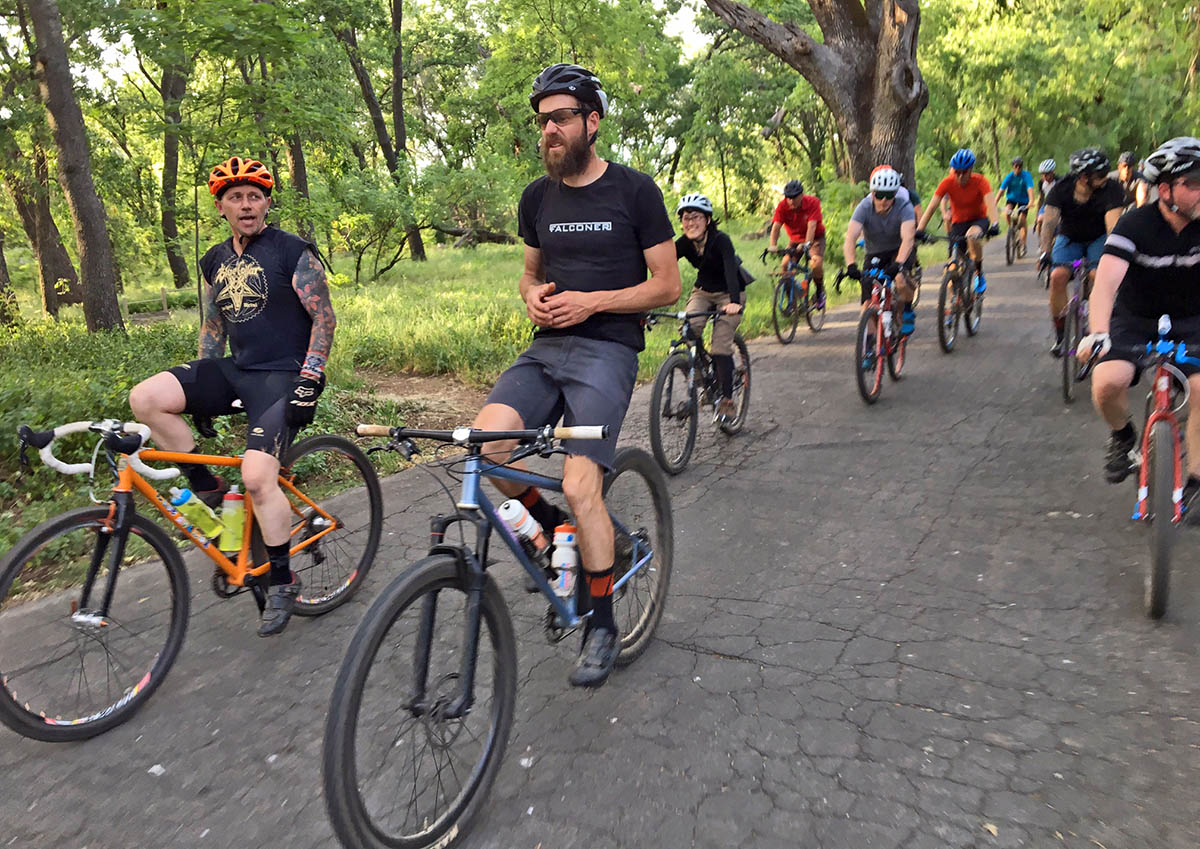
It’s always interesting when bike industry people talk among each other, off-the-record. On the ride from the airport to Paul Camp a few weeks ago, one bike tester was still visibly shaken when he related: “My tubeless tire blew off the rim yesterday. I almost crashed.” Worried that this might have been one of our tires, I asked about the brand. He mentioned a big maker, known as a pioneer of ‘Road Tubeless.’ The tester continued: “I had it inflated to 90 psi, well under the max. I was just riding along, when suddenly – bam!”
Tubeless tires are becoming popular these days. Using inner tubes inside your tire almost seems like a throwback to the 1950s. Cars have not used inner tubes in over half a century, and mountain bikes have gone tubeless, too. Many of us have been riding our Allroad bikes, with their wide tires, tubeless for years.
Finally, road bikes, with narrower tires, are going tubeless, too. But it hasn’t always been smooth sailing: There are more and more reports of tires blowing off the rims. What is going on? Why are tires with inner tubes safe at high pressures, but the same tires sometimes blow off the rim when mounted tubeless?
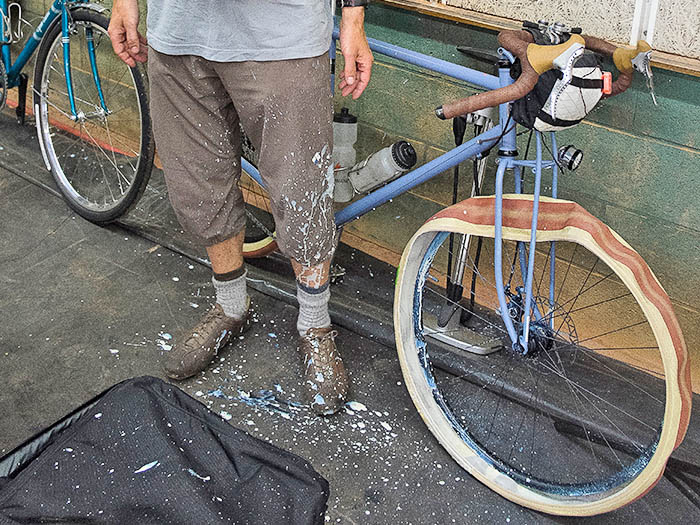
An inner tube doesn’t just hold air, it also reinforces the joint between the tire and the rim. Air pressure pushes the tube against the tire so that it no longer can move independently. For the tire to blow off, a very small section of the tube must stretch tremendously, so the tire can climb over the rim’s edge. As flexible as inner tubes are, they get to a point where they don’t stretch any farther – pull on a tube, and you’ll notice this. That makes it very hard for the tire to blow off the rim.
Without an inner tube, there is nothing reinforcing that joint. If the fit between rim and tire is even just the slightest bit loose, the tire can slide upward, and – bam! In fact, even with a perfect fit, there is a point at which a tire blows off the rim: Tire beads can stretch a little, and the higher you inflate the tire, the more force there is stretching the bead. That appears to be the root cause of the problem: Road tires typically are run at relatively high pressures.
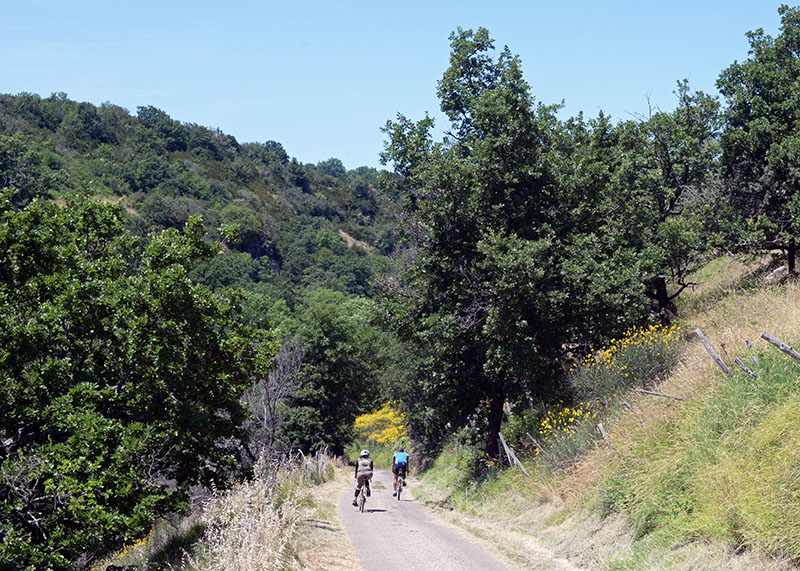
Thinking about this, I realized that ‘Road Tubeless’ is a bit in uncharted waters: Usually, tubeless tires run at much lower pressures. Tires for cars and motorcycles are generally inflated to less than 45 psi. (The exception is airplane tires with up to 200 psi, but those are a very special design.)
All these tires also are much stiffer than bicycle tires, which helps them stay on the rim. A supple tire can move in just one small spot, which makes it much easier to climb over the rim’s edge. I was surprised at Paul Camp to hear about the tester’s experience with a tire that isn’t even known for its supple casing. But compared to car or motorcycle tires, even stiff bicycle tires are supple…
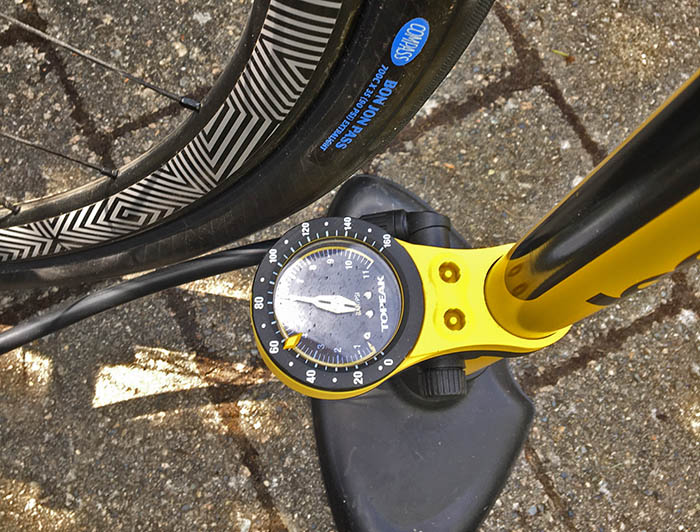
To test the limits of our tires with tubeless mounting, I installed a Compass Bon Jon Pass 700C x 35 mm tire on a wheel that we had measured carefully to make sure its diameter was exactly to spec. I inflated the tire to its maximum pressure of 90 psi (6.2 bar) – without problems. The pressure has already gone down to 85 psi by the time I took the photo – there was no sealant in the tire for reasons that will become apparent in the next paragraph.
I then inflated the tire further. 100 psi was fine. 105 psi, no problem. A few more pump strokes, about 108 psi, and – bam! The tire blew off the rim. I was wearing ear protection, and there was no sealant inside the tire, so no damage was done.
Of course, few people would inflate a 35 mm tire to 108 psi (7.6 bar). Even with tubes, the Bon Jon Pass is rated to a maximum of 90 psi (6.2 bar). And as long as everything is perfect, you can run them tubeless at this pressure, too. But in the real world, not everything is perfect. The diameter of different rims can vary considerably. We’ve found that the rims on many production bikes are a bit smaller than spec, because that makes it easier to mount the tires on the assembly line. Of course, this also results in a looser fit of the tires. If you build up the rim bed with extra rim tape – some mechanics even use thicker ‘Gorilla Tape’ – you can improve the fit of the tire on the rim.
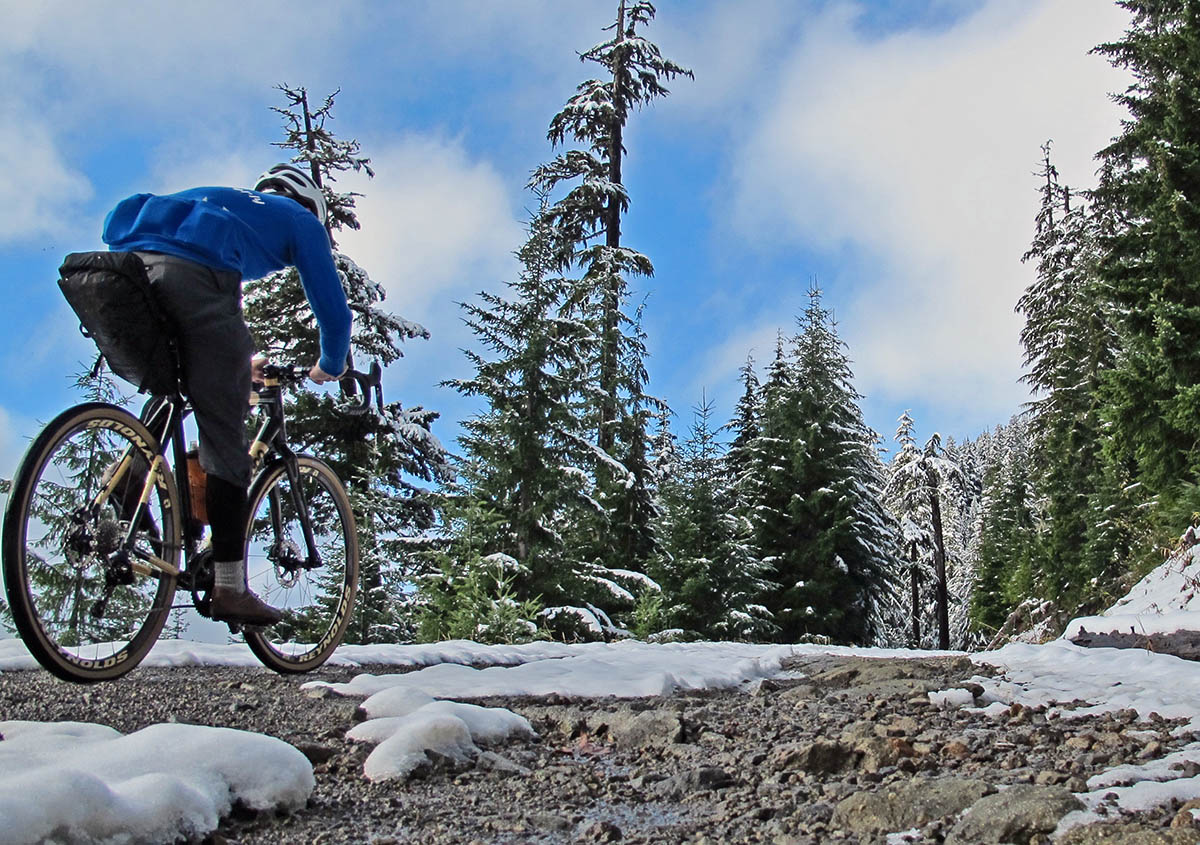
Over the last year, I’ve been testing every model of tubeless-compatible tire in the Compass program. I’ve mounted them without tubes on a range of bikes, both Bicycle Quarterly test bikes and my own machines. I’ve experienced zero problems, but I also run them at pressures of 60 psi (4 bar) or lower. I remounted the Bon Jon Pass that blew off the rim and inflated it to 60 psi, put in some sealant, and took it for a couple of rides. As expected, it was fine. (However, we don’t recommend reusing tires that blew off the rim, as the bead can get damaged.)
Based on this experience, we recommend: Do not exceed 60 psi (4 bar) when running Compass tires tubeless. If you need higher pressures, please use tubes. Since the problems with running tubeless tires at high pressures are not limited to Compass tires, I’d recommend this for all tubeless tires – and especially for high-performance tires that are relatively supple.

However, you also don’t want to run too low a pressure with tubeless tires. If the tire flexes excessively, this will break down the casing until it starts to leak (above). With a narrow tire, you have a narrow window between “too high” and “too low” pressures. On a 35 mm tire, 60 psi (4 bar) still is plenty for most riders. (I usually ride my Bon Jons at about 35-40 psi.) But if we were to offer a 26 mm-wide tubeless-compatible tire, 60 psi isn’t enough even for a light rider. Yet going higher than 60 psi would risk blowing the tire off some rims.
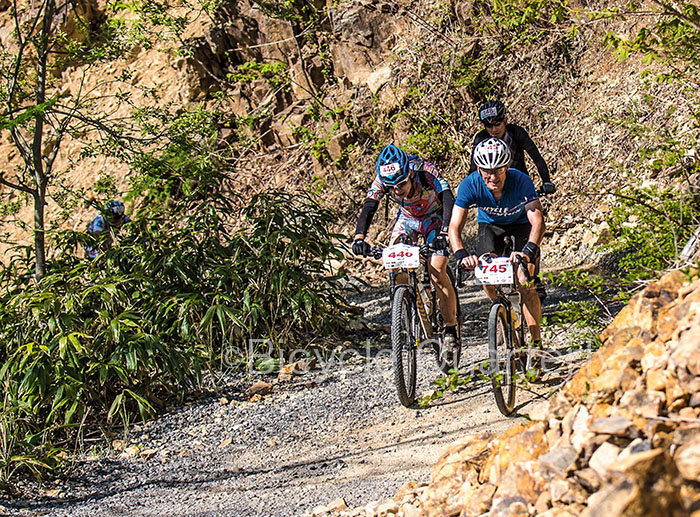
With wider tires, you don’t have that problem. I run the 54 mm-wide Rat Trap Pass tires on my Firefly at 40 psi (2.8 bar) on smooth roads. At such a ‘high’ pressure (for tires this wide), the bike feels like a racing bike. On gravel, I can go down to 22 psi (1.5 bar) without risking damage to the casings. I run them tubeless now, after suffering two pinch flats during the Otaki 100 km Mountain Bike Race in Japan (above). As I found out, riding over really rough ground at very high speed will pinch-flat even 54 mm tires!
I feel that for riding on rough gravel, tubeless really is the way to go. Choose tires that are wide enough, run them at low pressure, and you shouldn’t have trouble. (Unless your rims are way out of spec.)
For road riding, the advantages of tubeless tires are less clear. Pinch flats are much less of an issue on the road, unless you still ride ultra-narrow tires. All the testing I’ve seen – including our own – indicates that the rolling resistance of tubeless tires is no lower, and perhaps even higher, than using thin, lightweight inner tubes. That isn’t surprising: You replace an ultra-supple inner tube with a liquid sloshing around inside your tire.
What about flats? One nice feature is that the sealant inside the tubeless tire automatically seals small punctures. You don’t have to go tubeless for that: Some riders use sealant inside their tubes. They report that it also seals small punctures in the tube – provided you use it from the start, when you mount a new tire. (With an old tire, during a puncture, the air may not escape through hole that is right above the puncture in the tube, but through a bigger hole from a previous puncture that is elsewhere in the tire. Then the sealant flows into the space between tire and tube, creating a mess without sealing the tube.)
Based on all of the above, we – as well as other tire makers like Pirelli – have concluded that at this time, running high-pressure tires tubeless isn’t worth the risks. Can these issues be resolved? It’s difficult to say. Perhaps ‘Road Tubeless’ is the way of the future, or perhaps it’ll be like radial tires for bicycles. Cars have used radials for decades, but for bicycles, they never caught on.
What needs to happen to make tubeless tires safe even at high pressures? Clearly, the interface between tire bead and rim must become more standardized, and manufacturing tolerances must become tighter. With a ‘perfect’ rim, it’s already fine to run our 35 mm tires tubeless at 90 psi, but how do we get all rims to be perfect?
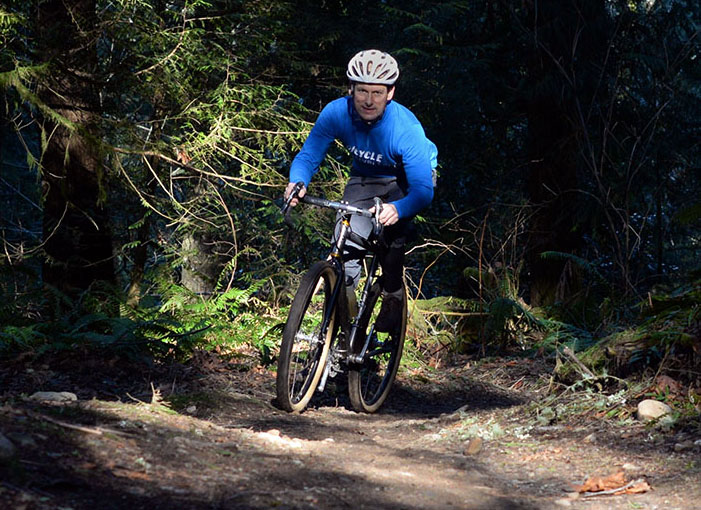
For now, here is the take-home message for running tubeless tires:
- For tubeless, we recommend a maximum pressure of 60 psi (4 bar).
- If you are riding on gravel or rough stuff, tubeless eliminates pinch flats. And you’ll be running less than 60 psi anyhow.
- If you ride on the road and need more than 60 psi, use inner tubes. Not just with Compass tires, but with other brands as well.
- Even on smooth roads, Compass’ wide tires roll as fast as our narrow ones. Getting wider tires and running them at pressures below 60 psi is a good way to use tubeless on the road.
- When mounting a tire tubeless, first inflate it 20% higher than the pressure you’ll be riding. Let it sit for a while to make sure it will not blow off your rim. Then decrease the pressure before you ride the bike. That way, you know that you aren’t at the upper pressure limit for that particular tire/rim combination.
Tubeless technology holds great promise, but like everything, it should be applied where it makes sense and where it is safe. In a future post, we’ll talk about tips on how to set up Compass tires tubeless.
Photo credits: Nicola Joly (exploded tire), Cyclocross Magazine (damaged casing), Toru Kanazaki (Otaki 100 km Race)


